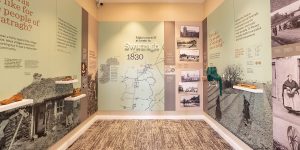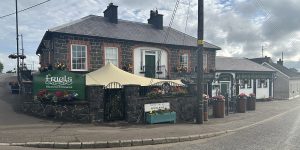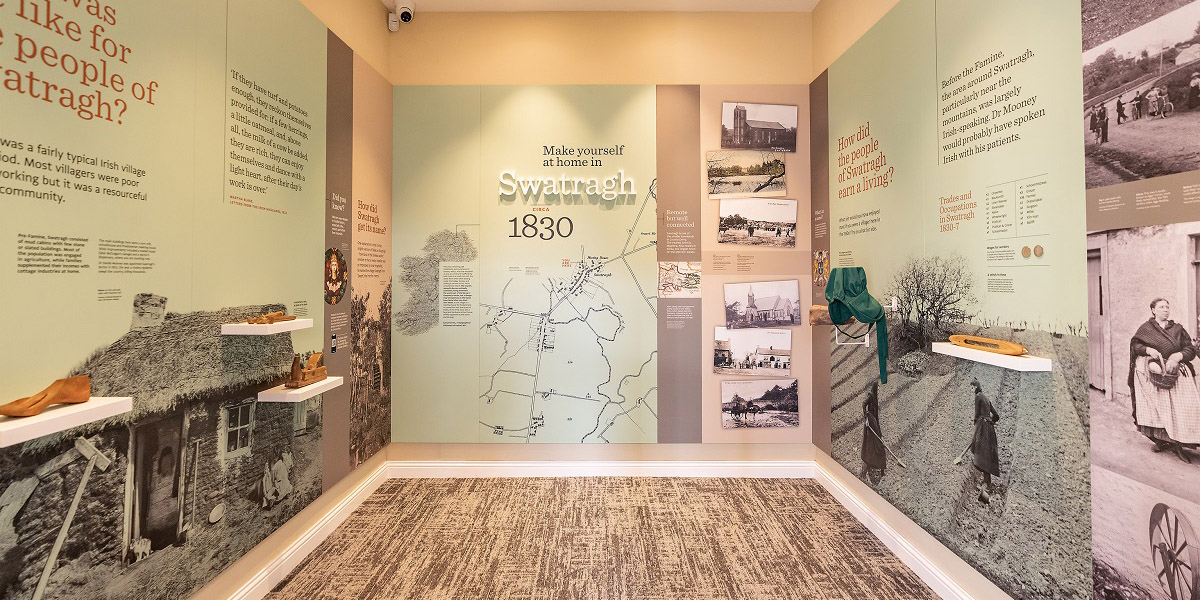
HISTORIC DISCOVERY OPENS WINDOW TO A NEW VISITOR CENTRE
A new visitor experience called Gorta, Swatragh’s Famine Story has officially opened. Located in the heart of the Mid Ulster countryside the centre, developed by local businessman Dermot Friel, tells the rich history and heritage of Swatragh village alongside the story of resident Dr Mooney who supported the local community during the Great Hunger (An Gorta Mór).
Following the discovery of a small window on the Friel’s historic bar and restaurant site during lockdown, along with an earlier discovery of an original famine pot in a shed on the site, Dermot Friel was inspired to consult with experts and local historians. This led to uncovering the story of Dr Mooney, who lived and worked from his surgery on the Friel’s site in the 1840s. During the famine, Dr Mooney used the surgery as a soup kitchen*. Since the site was established in 1835 it has not only been a surgery but a coaching inn, hotel, post stop and also the home of the Friel family for 4 generations. It is now at the heart of the new visitor centre.
Expert research, reports and oral history on Dr Mooney, along with historical information from Dr Ciaran Reilly a famine historian from Maynooth University, the Mooney family, Ballinascreen Historical Society on the local workhouse in Magherafelt and the local families affected by the famine, have all been used to create a poignant and interactive storytelling experience. The visitor centre features interpretative panels, audio visual aids, unique artwork depicting famine scenes by acclaimed sculptor Kieran Tuohy and the installation of the famine pot in, what is believed to be its original position in the soup kitchen. Expert local tour guide Cathy O’Neill will guide and talk to visitors at the centre. Visitors can also join Cathy on a walking experience called The Emigrant’s Walk, which retraces the footsteps of Irish migrants who left famine stricken Ireland to seek new lives in the new world. Rich in the area’s history and culture with a gentle hike up the Carntogher Mountain, through countryside almost unchanged since famine times reveals a stunning view of Lough Neagh, the Sperrins and the Mourne Mountains. Visitors can also place a stone on the “Cairn”- an emotive act many emigrants performed as they passed through this site.
The new visitor centre aims to keep this unique story alive, leaving a legacy for generations to come. It will also provide a connection to the past, understanding of the local community famine story and the soup kitchens in Ireland.
Gorta, Swatragh’s Famine Story is part of ongoing work to develop the historic Friel’s site as a key destination for the local community and for visitors to the area. It represents a £350k investment creating 4 new jobs developed with support from Tourism Northern Ireland’s Experience Development Programme, Invest Northern Ireland’s Innovation Voucher programme and Dermot Friel. Friel’s is also the lead company of the Loughinsholin Mid Ulster Tourism Cluster, which is supported by Invest Northern Ireland through its Collaborative Growth Programme.
Dermont Friel, owner of the Friel’s, said:
“The opening of Gorta, Swatragh’s Famine Story is a very special moment for everyone involved. It is inspired by the story of local charitable people of the time and the risks they took to help people in the community. It has taken a big team effort, with support from Tourism NI and Invest NI, as well as years of hard work and focus to develop and gather the research to help us present and tell the story in the best way possible. It is a very important story – not only is it a deeply personal one to the Swatragh community, but it is one that connects us to many across the world especially in America and Canada. We hope visitors and the community connect with the story and feel that we have done it justice.”
John McGrillen, CEO of Tourism NI, commented:
“I am delighted Tourism NI has been able to support this latest addition to the tourism offering in Mid Ulster through our Experience Development Programme. This authentic attraction, telling the story of a local humanitarian in the most traumatic period in our history, is exactly what our visitors want to experience. I would like to pay tribute to Dermot’s resilience in getting to this, making his vision a reality, and we look forward to working with him to promote this experience in the future.”
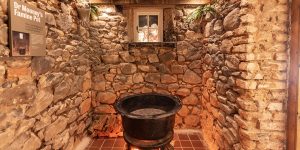
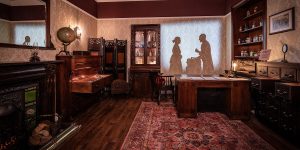
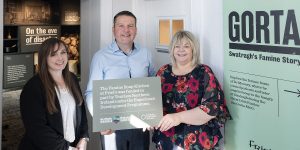
Cathy O’Neill, Dermot Friel and Esther Dobbin from TNI
